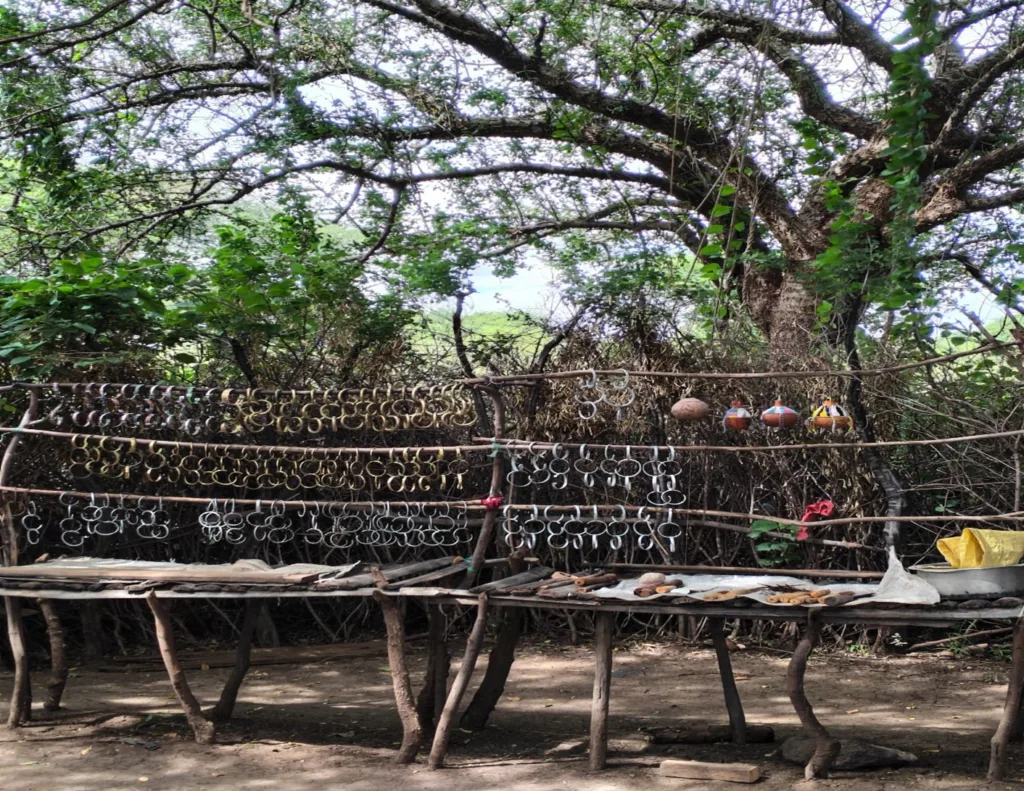Directed Research in Bhutan!
In Bumthang, spring is finally here. Leaves are opening on the birches and maples, and at least four species of Rhododendrons are in bloom. Also, it hasn’t snowed one the ridge above campus in two whole days! Regular scheduled classes have come to an end, but our Directed Research projects are just hitting their stride. For Directed Research, our students break up into smaller groups, working closely with one faculty member on a collaborative project.
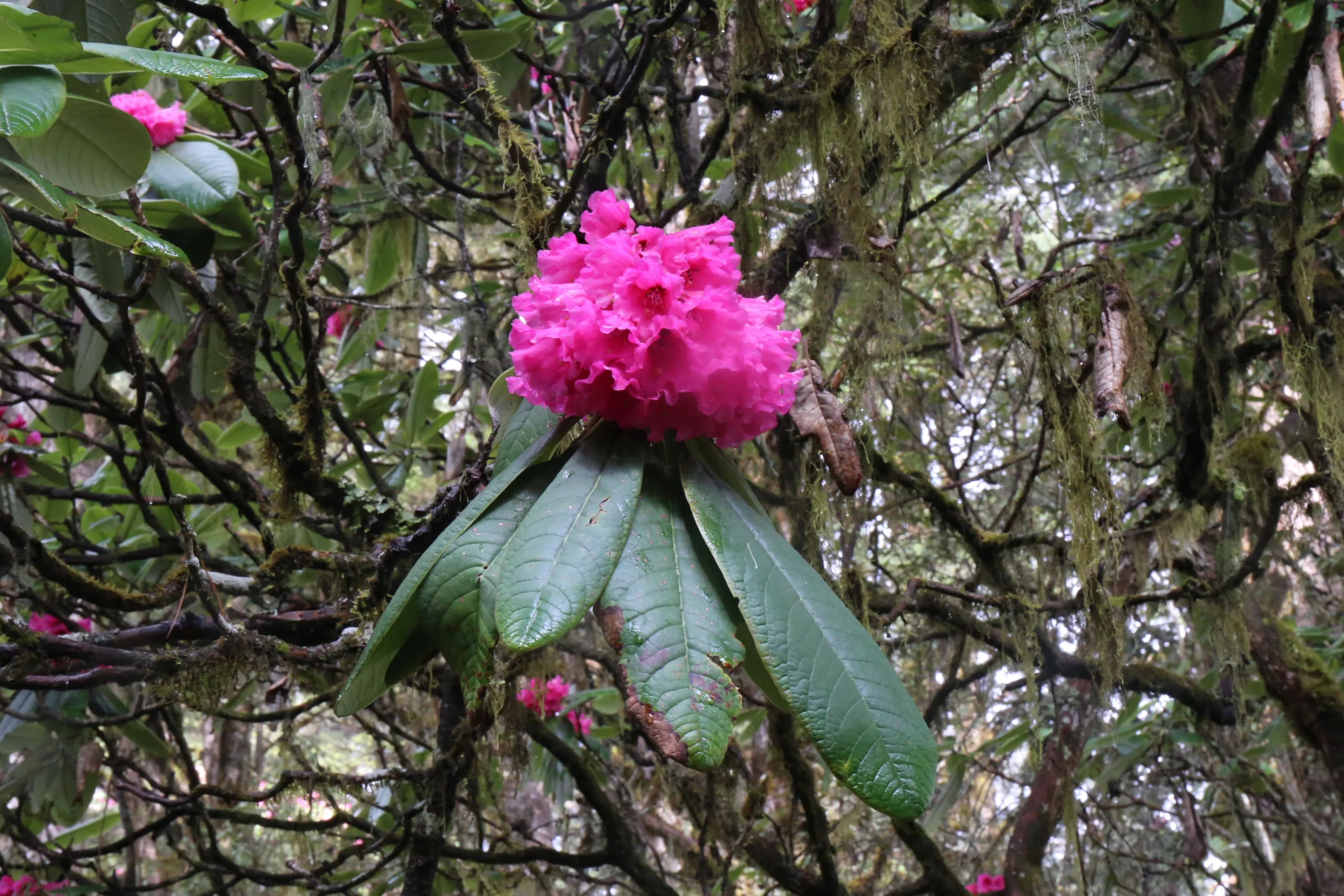
A cluster of rhododendron flowers on a mossy-forested ridge above the UWICE campus
Dr. Pete’s group:
The students working with me are studying the effects of fine-scale topographic variation on organisms found on UWICE campus. In mountains, even small changes in the direction and steepness of the slopes can cause profound changes in temperature, precipitation, and the amount of solar radiation they receive. Students are examining effects of these differing environments on plant and bird communities, as well as measuring relative growth rates of trees and shrubs. Also, because this is the first time SFS has run a spring program in Bhutan, we are able to compare our spring bird and plant community surveys to those we conducted at the end of the fall semester, when winter was approaching. This information will help us understand how organisms in complex topographic landscapes use different areas and resources within forests, and inform us how they could respond to changing climates in the Himalayan region.
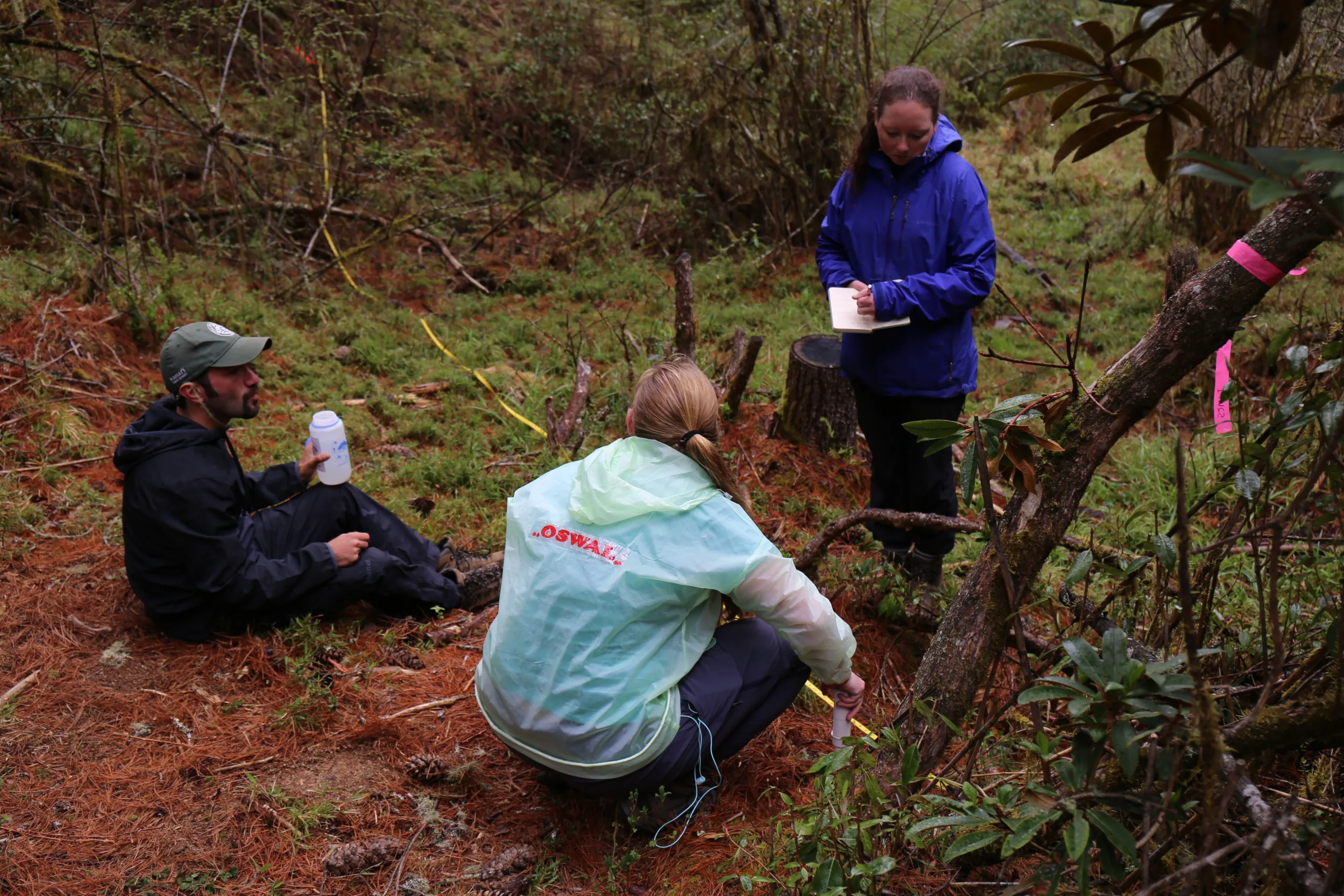
Matt, Eleanor, and Emma conducting vegetation surveys in a ravine on the UWICE campus
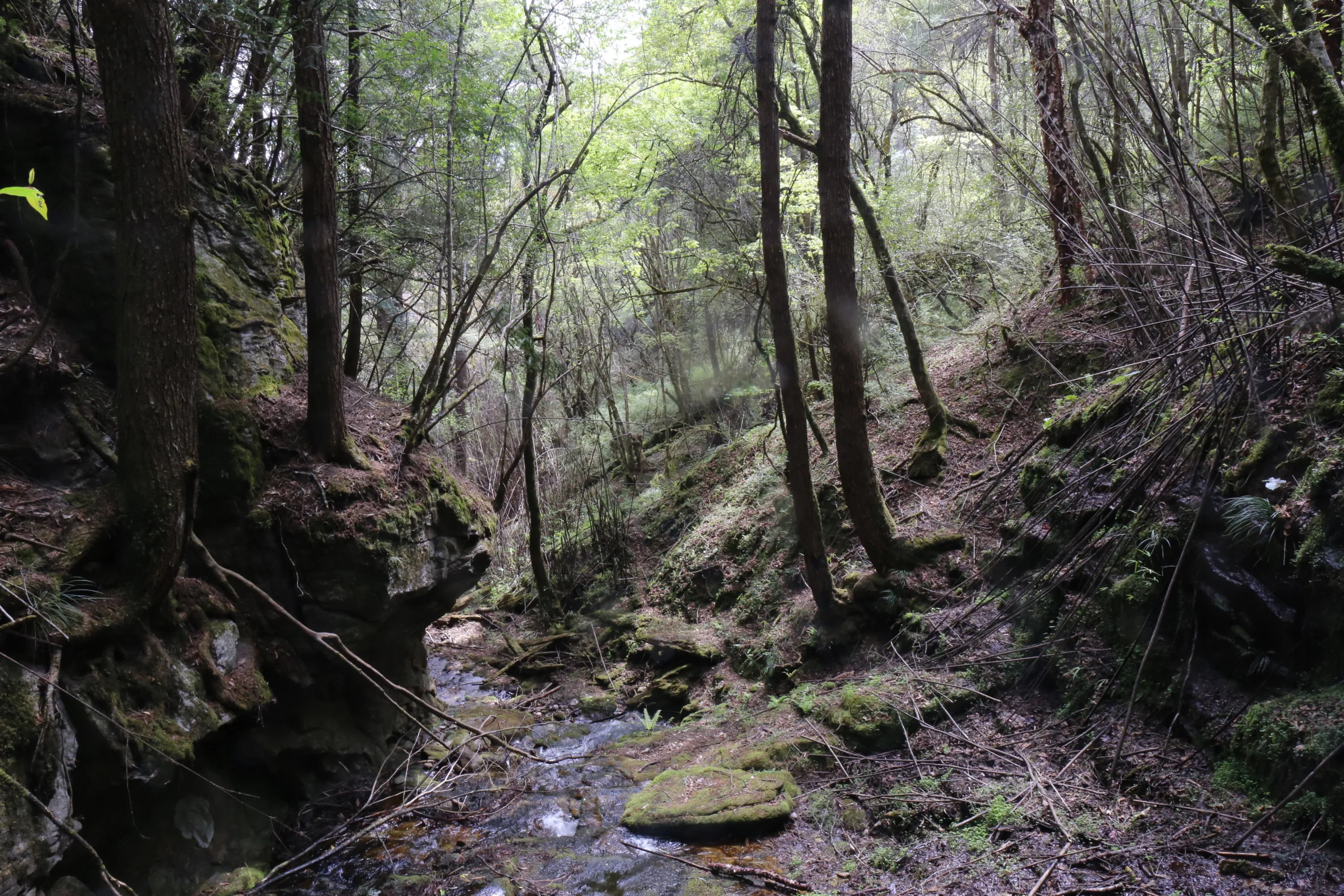
A picturesque ravine on the UWICE campus, under a canopy of hemlock

Eleanor holding an improvised plant-measuring device, a tall stem of bamboo
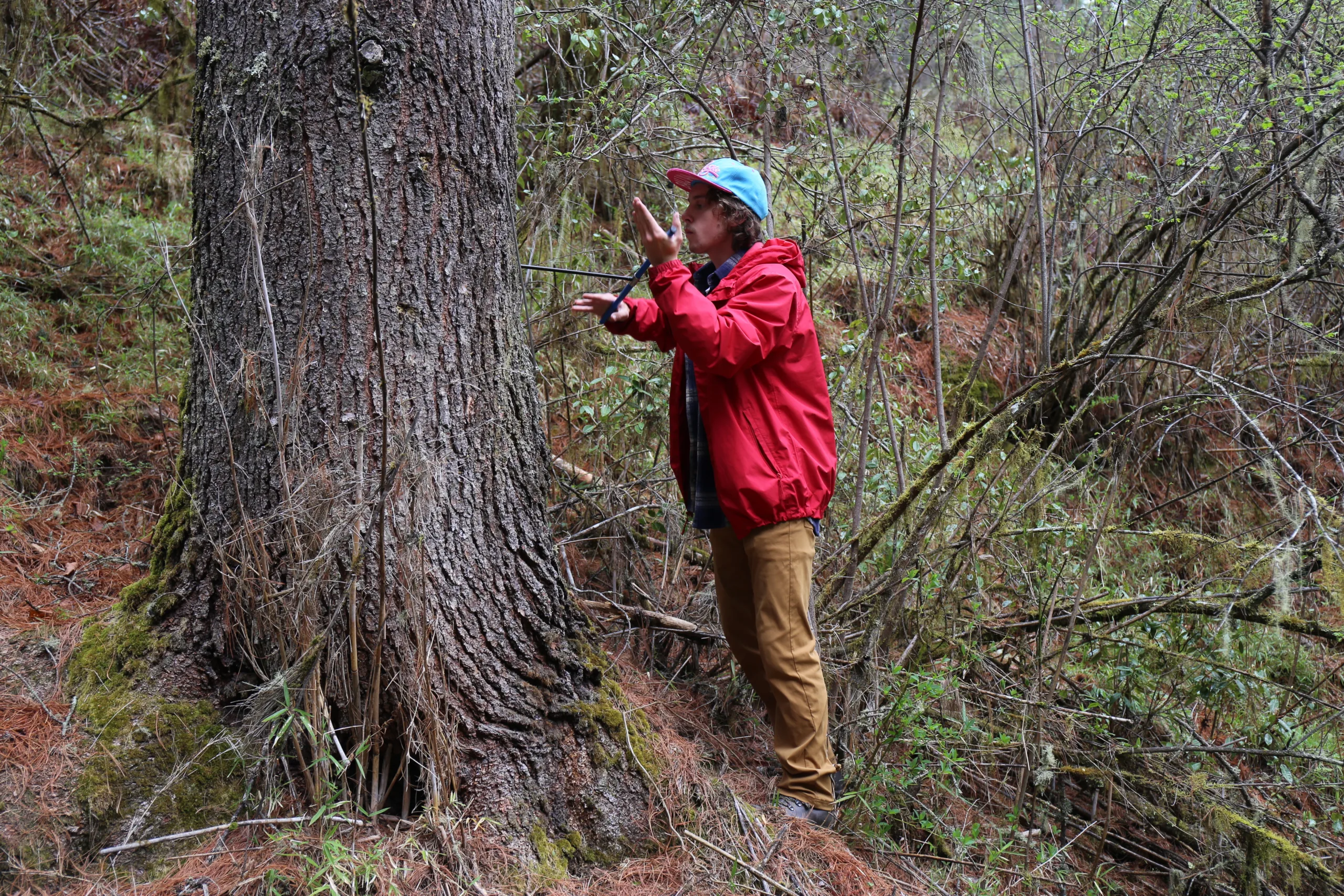
Henry takes a core sample from a blue pine tree, to determine the tree’s age and rate of growth
Dr. Purna’s group:
Community Forests, which are created to decentralize natural resource management from national to local levels, are increasing at an incredible rate in Bhutan. Commencing fifteen years ago, more than 600 Community Forests have been created in the country. These forests are expected to serve multiple functions, including meeting local demand for forest products on a sustainable basis, providing income possibilities to Community Forest members, and to distribute natural resources with minimal government interventions. This Directed Research will examine the effectiveness at achieving these goals in two Community Forests: Siptangzur Forest in Tangsibi village, and Shambayung Forest in Tang village. SFS student projects include assessing economic viability and carbon sequestration potentials, wildlife conservation, as well as the effectiveness of current forest management plans.
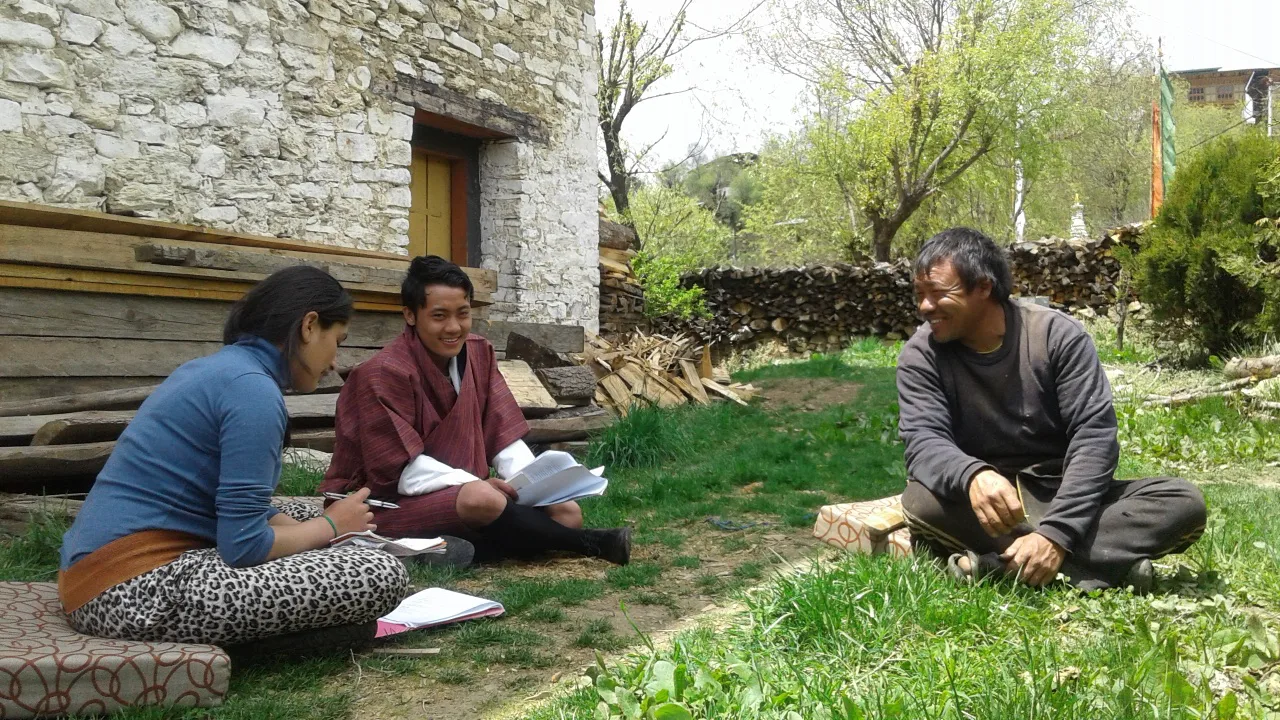
Kanchan interviews a community resident about forest use in Tangsibi village
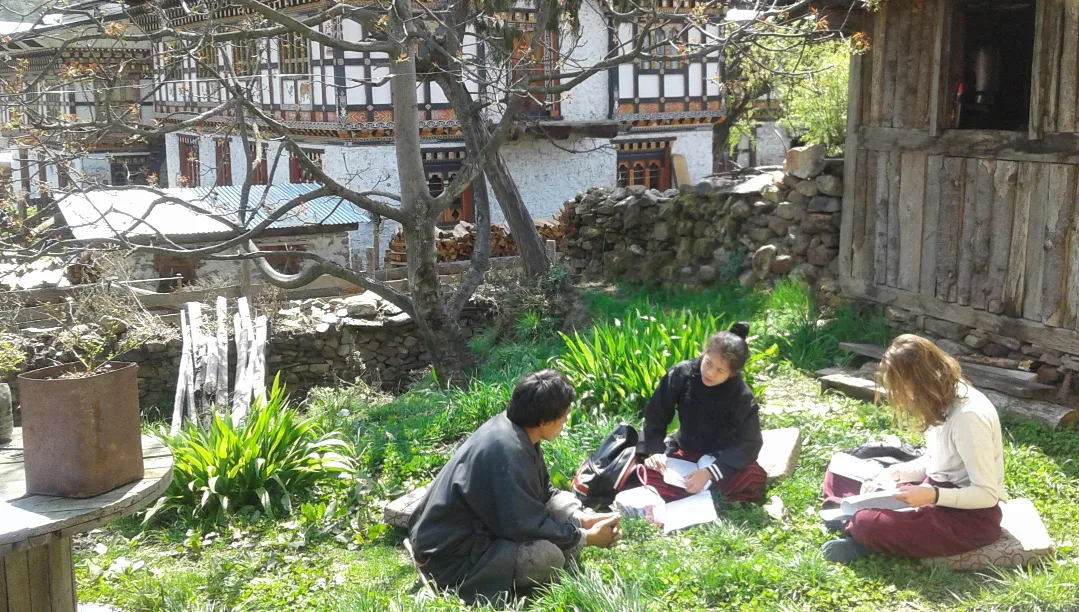
Adair interviews a community forester about forest policy in Tangsibi village
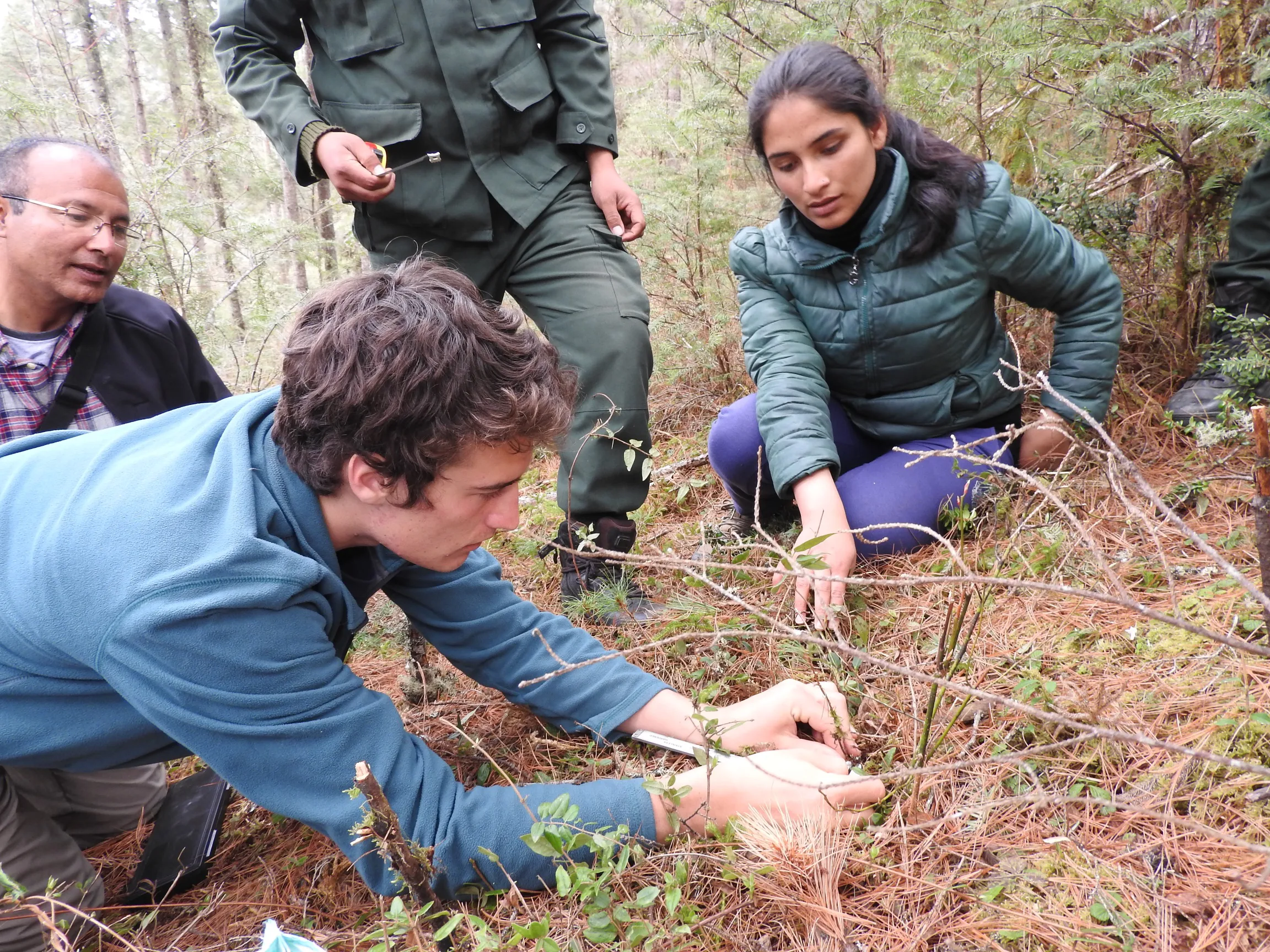
Nick, Janchan, and Dr. Purna perform a forest inventory assessing natural regeneration of blue pines, the most economically important tree species in Bhutan
Dr. Riam’s group:
Many studies examine protected area policy and park biodiversity, but there are few case studies documenting what it is like to live within the boundaries of a national park in Bhutan, and how newly created parks alter the livelihoods of the peoples within them. This is where our Directed Research comes in! SFS students are performing an in-depth case study of Choekhortoe village in northern Bumthang, were they will document how people conduct their daily lives in a landscape shared with some of Bhutan’s most amazing biodiversity and cultural landscapes. Wangchuck Centennial National Park, which surrounds Choekortoe, was gazetted in 2008. It has a large number of nomadic inhabitants, as well as settled villages and sacred sites. Within this context, students are asking what changes have occurred since the establishment of the park, how agricultural knowledge may be gendered, how the local economy has changed through ecotourism and and conservation/development projects, and how perceptions of happiness have changed following park establishment. We feel truly blessed to be able to conduct our Directed Research in such an outstanding place.

A panoramic view of the Choekortoe valley landscape, looking into the recently-established Wangchuck Centennial Park
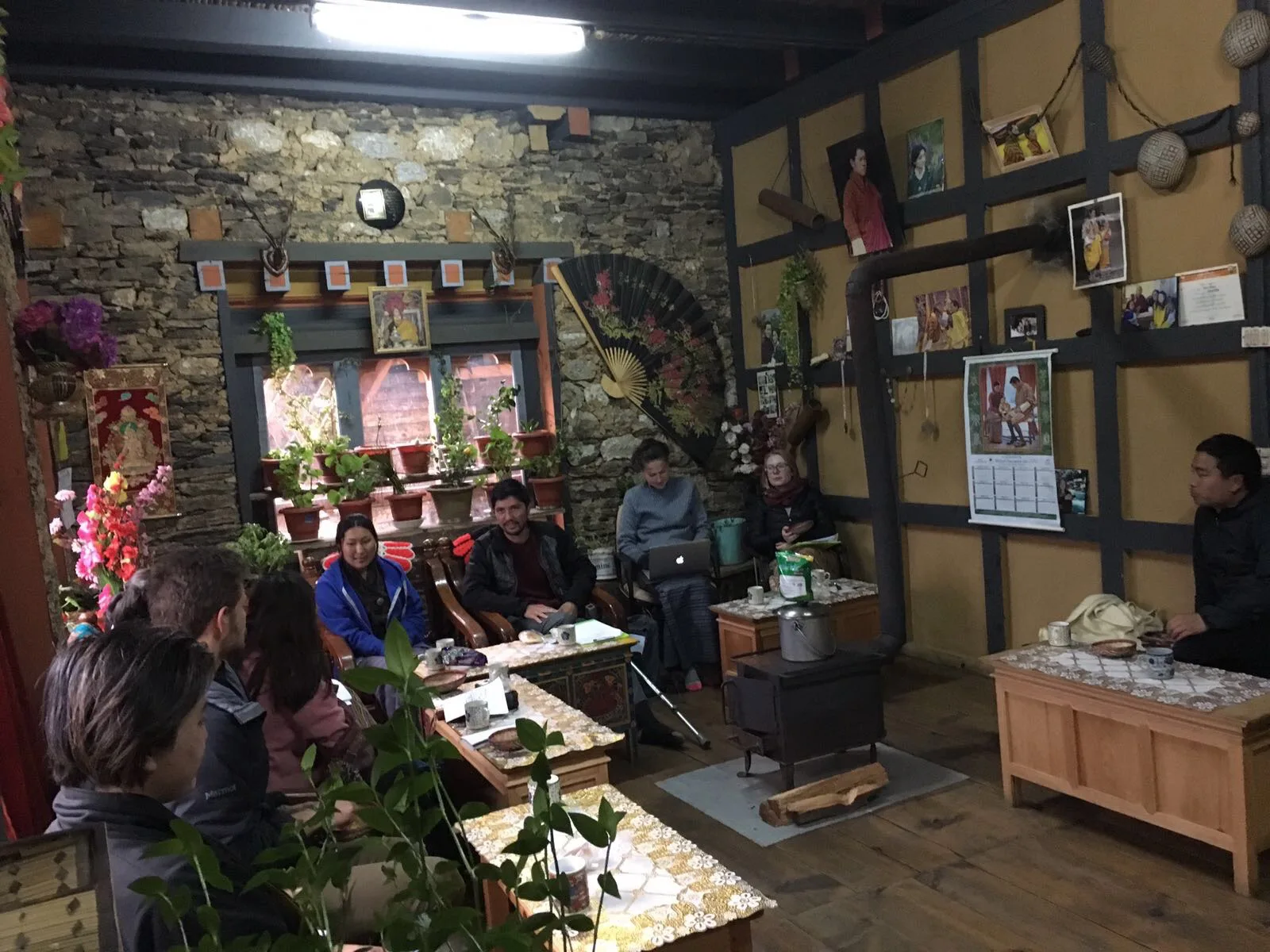
Matt, Annabel, Erick, Dr. Riam, Tasha, and Kencho debrief around the bukari (woodstove) in Aum Pema’s farmhouse after a day of interviews in Wangchuck Centennial Park
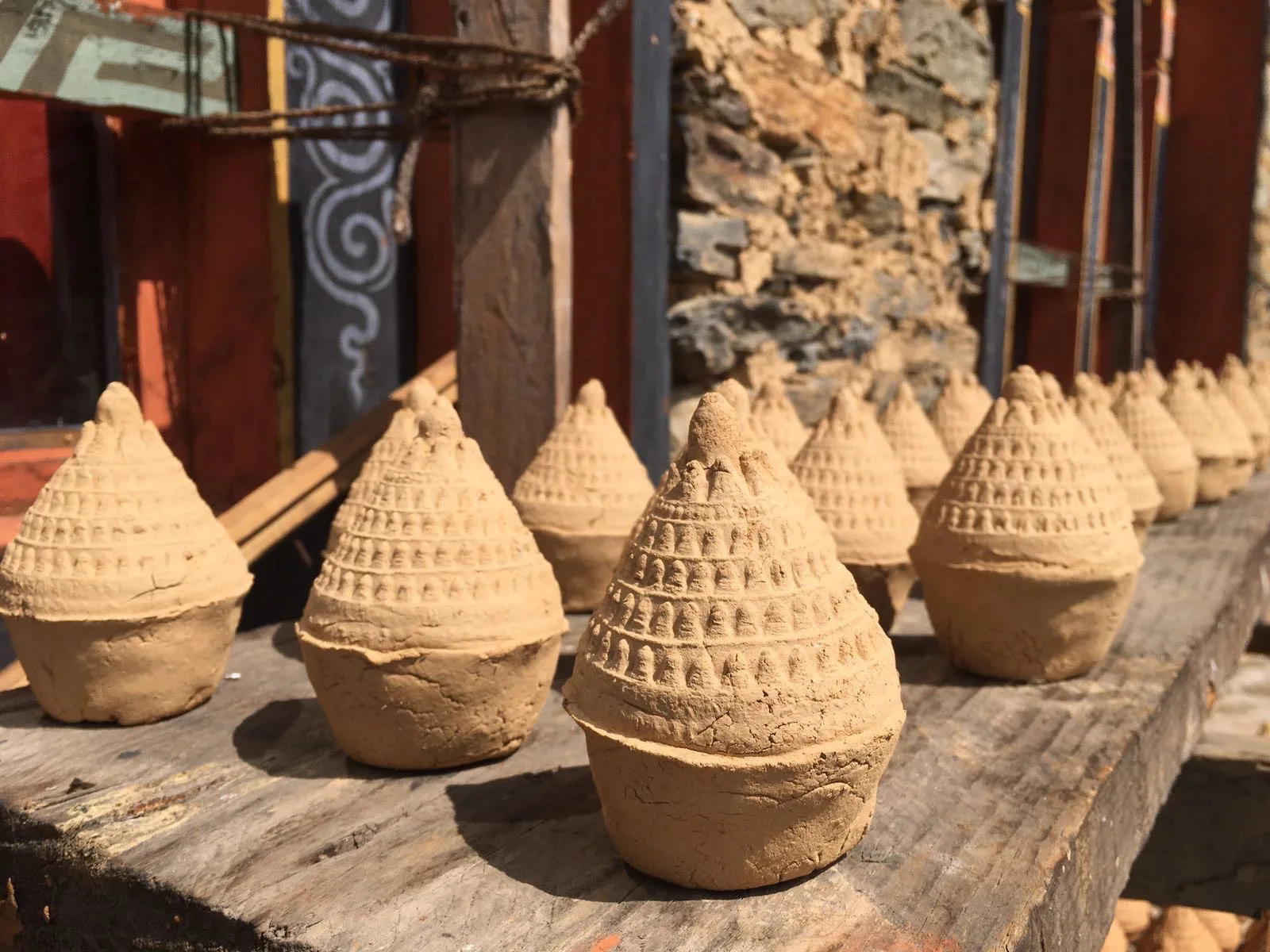
Tsa-Tsa outside of Aum Pema’s farmhouse. These minature, clay-molded stupas are placed as reliquaries in sheltered sites in the natural landscape as acts of devotion
Related Posts
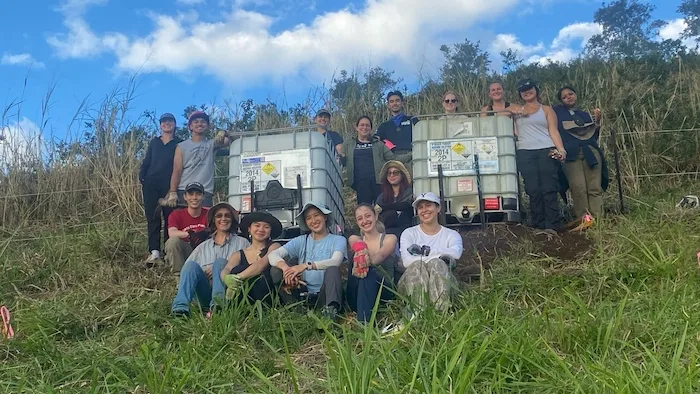
Restoration on a Cinder Cone: A Syntropic Story

